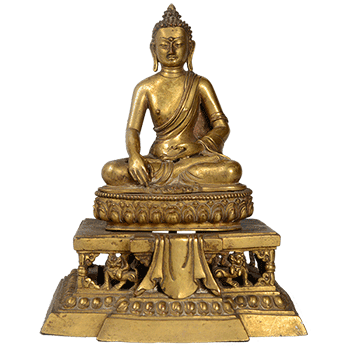This remarkable painting depicting Vishnu as a dwarf and asking for three steps of land finds its origin in Guler, Himachal Pradesh and dates back to 1780 CE. It is 18 cm in length and 28 cm in width. It is currently on display in the Miniature Paintings Gallery of the National Museum, New Delhi.
























